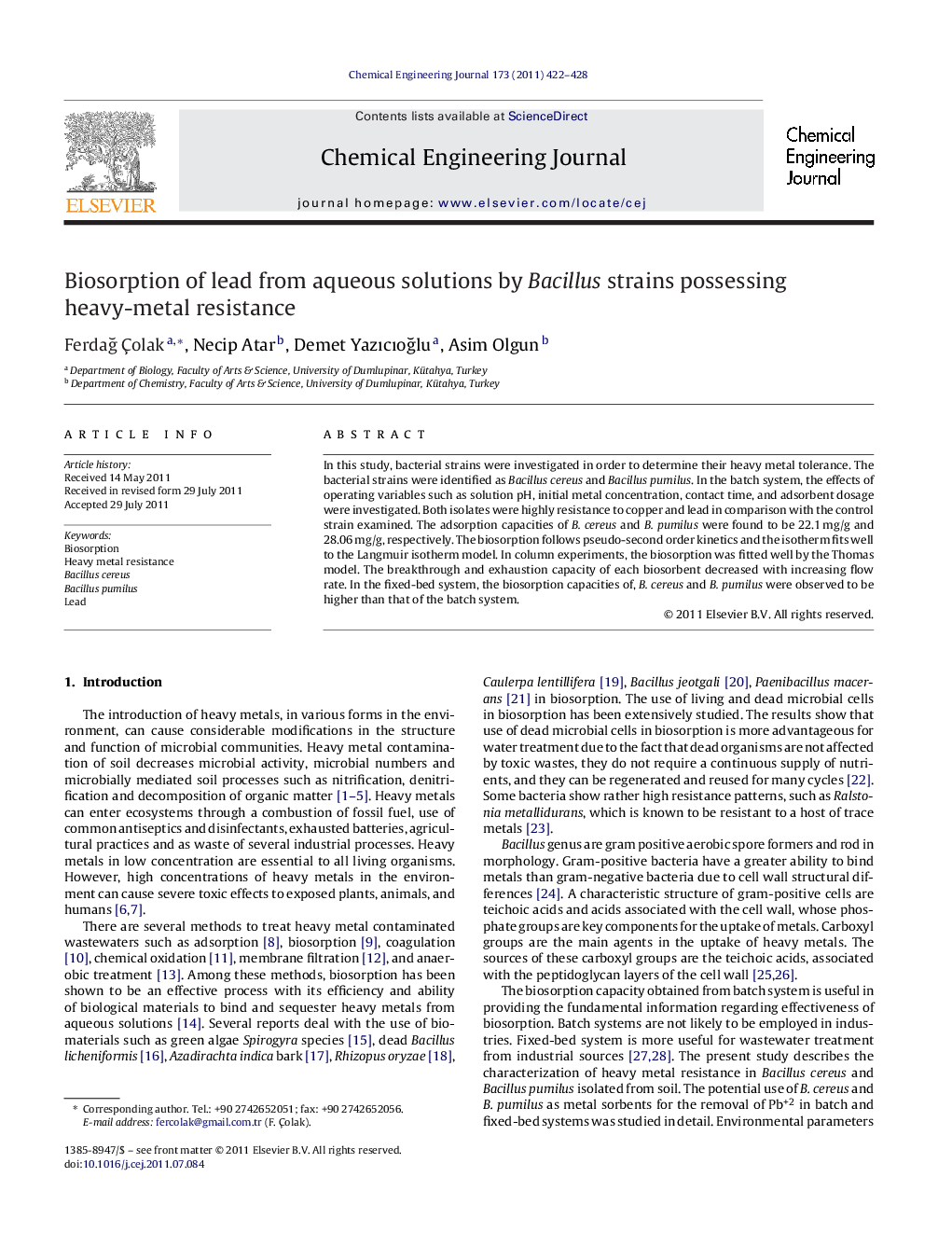| Article ID | Journal | Published Year | Pages | File Type |
|---|---|---|---|---|
| 150725 | Chemical Engineering Journal | 2011 | 7 Pages |
In this study, bacterial strains were investigated in order to determine their heavy metal tolerance. The bacterial strains were identified as Bacillus cereus and Bacillus pumilus. In the batch system, the effects of operating variables such as solution pH, initial metal concentration, contact time, and adsorbent dosage were investigated. Both isolates were highly resistance to copper and lead in comparison with the control strain examined. The adsorption capacities of B. cereus and B. pumilus were found to be 22.1 mg/g and 28.06 mg/g, respectively. The biosorption follows pseudo-second order kinetics and the isotherm fits well to the Langmuir isotherm model. In column experiments, the biosorption was fitted well by the Thomas model. The breakthrough and exhaustion capacity of each biosorbent decreased with increasing flow rate. In the fixed-bed system, the biosorption capacities of, B. cereus and B. pumilus were observed to be higher than that of the batch system.
► The biosorption capacity and heavy metal tolerance of Bacillus cereus and Bacillus pumilus. ► Biosorption of Pb2+ from aqueous solution. ► The Langmuir isotherm model and Thomas model fit well with the experimental results. ► Kinetic aspect of lead biosorption.
